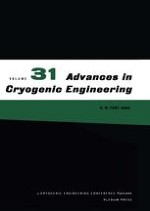1986 | OriginalPaper | Chapter
Application of Internally Cooled Superconductors to Tokamak Fusion Reactors
Author : Peter A. Materna
Published in: Advances in Cryogenic Engineering
Publisher: Springer US
Included in: Professional Book Archive
Activate our intelligent search to find suitable subject content or patents.
Select sections of text to find matching patents with Artificial Intelligence. powered by
Select sections of text to find additional relevant content using AI-assisted search. powered by
Recent proposals for ignition tokamaks containing superconductors are reviewed. As the funding prospects for the U. S. fusion program have worsened, the proposed designs have been shrinking to smaller machines with less ambitious goals. The most recent proposal, the Tokamak Fusion Core Experiment (TFCX), was based on internally cooled cabled Nb3Sn conductors for the options which used superconductors. Internally cooled conductors are particularly advantageous in their electrical insulating properties and in the similarity of their winding procedures to those of conventional copper coils. Epoxy impregnation is possible and is advantageous both structurally and electrically. The allowable current density for this type of conductor was shown to be larger than the current density for more conventional superconducting technology. The TFCX effort identified research and development needed in advance of TFCX or any other large ignition machine. These topics include the metal used for the conduit; nuclear effects on materials; properties of electrical and thermal insulators; extension of superconducting technology to the sizes of coils envisioned and to the field level envisioned; pulsed coil superconducting technology; joints and insulating breaks in conductors; heat removal or flow path length limitations; mechanical behavior of potted conductor bundles; instrumentation; and fault modes and various questions integrated with overall machine design.
